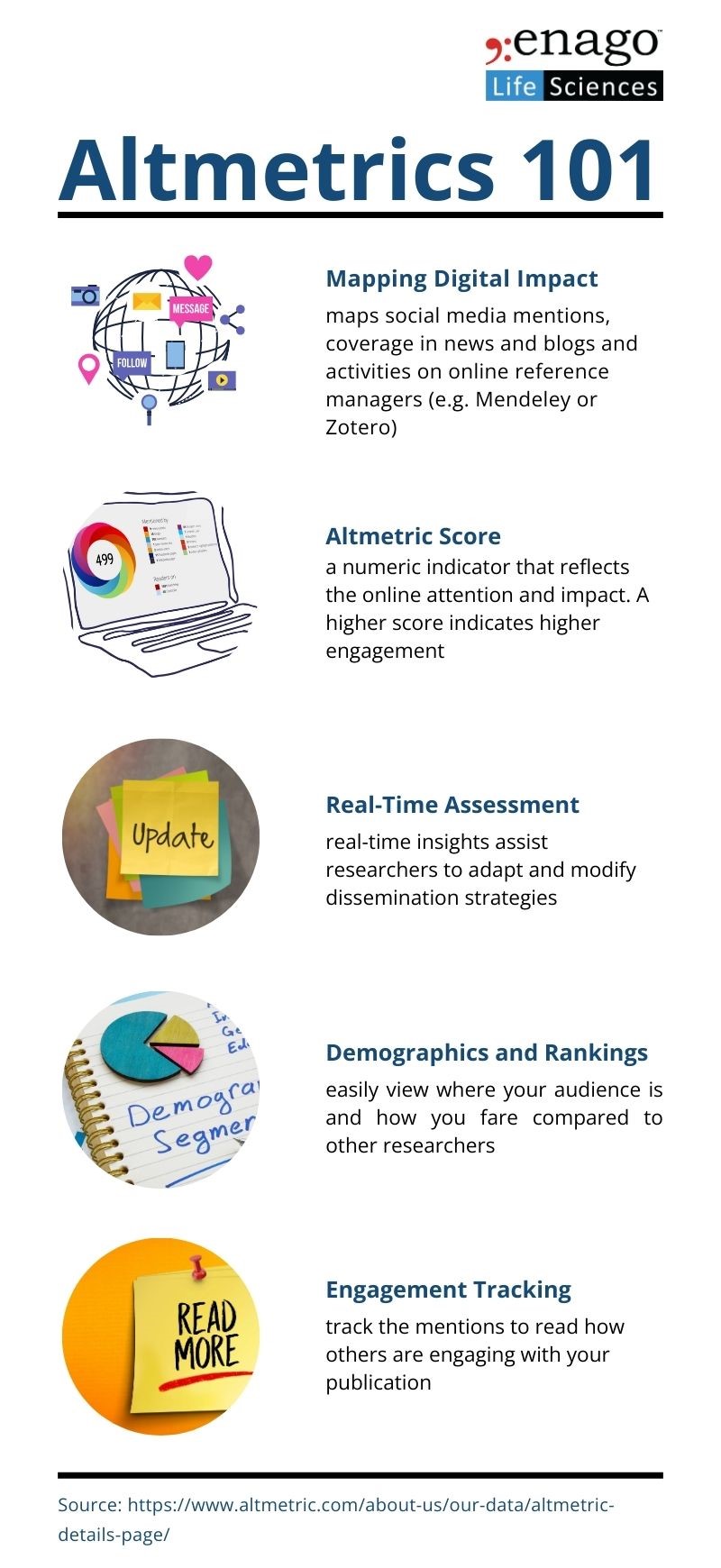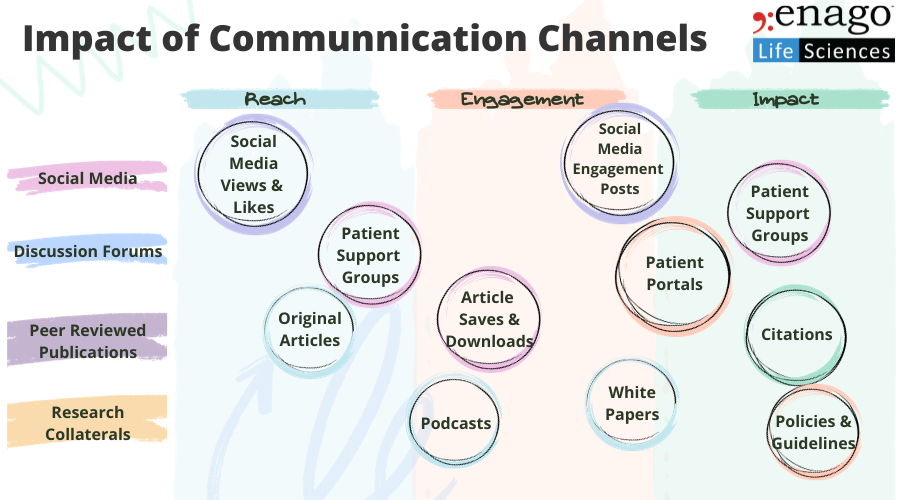In the dynamic sphere of healthcare, the dissemination of cutting-edge medical information is a necessity and a strategic imperative. Consequently, medical publication planning & strategy becomes pivotal to prioritizing, disseminating, and measuring the impact of medical publications. This comprehensive strategy involves meticulous decision-making and execution. At its core, lies the development of high-quality, evidence-based content that not only contributes to the scientific knowledge base but also aligns with the strategic goals of healthcare stakeholders. It requires a nuanced understanding of the target audience, optimal use of various publication channels, and a keen sense of timing.
Measuring Impact for Medical Publication Planning: Why It Matters
Assessing the impact of medical publications is not a mere formality but a critical element in the life cycle of disseminating medical information. It goes beyond just citations; it’s about understanding how research contributes to the broader scientific landscape and influences healthcare practices. The goal is to improve patient care by increasing practitioners’ know-how and enhancing on-ground practices. Measuring impact forms a vital feedback loop, informing researchers, publishers, and institutions about the effectiveness of their strategies.1,2 Medical professionals need to track not just what they publish but also how and where they publicize and promote their publications to maximize their impact.
However, it is crucial to align impact assessments with the time scale, as suggested by Rees et al.2 A short-term assessment measures the “reach” of a publication, and usually occurs on social media as impressions; while an intermediate term measures “engagement,” wherein the readers express explicit interest by accessing and saving the publication as well as any associated media. True “impact” may only materialize when readers actively advocate for the research publication, either through citations, or utilizing the publication to inform knowledge-driven articles, clinical guidelines, or policy recommendations.
Which Metrics Should Be Measured?
In the era of data-driven insights, impact assessment relies on a spectrum of metrics. While traditional metrics like citations and journal impact factor offer a narrow approach to assessment, the digital revolution has transformed the way medical publications impact the world.3 Social media platforms, online communities, and open-access initiatives amplify the reach of scientific findings, democratizing access to information. This shift underscores the importance of adapting publication planning strategies to leverage the vast potential of digital platforms.4 Medcomm professionals should leverage a variety of modern metric such as pageviews, downloads, citations in non-peer reviewed materials, and even alternative metrics (altmetrics) to map out the impact of a publication. These metrics collectively measure how widely and deeply the information has permeated the scientific community, categorized based on whether you are measuring reach, engagement or impact.

In measuring the impact of medical publications, medcomm professionals must tailor metrics to their goals.4 For patient awareness, social media metrics are crucial, as resonating with non-medical audiences. This strategic choice not only refines impact evaluation but also influences publication planning; for instance, anticipating the need for Plain Language Summaries (PLS) and creating engaging social media content like infographics or videos. Similarly, in a research-focused scenario, citation counts and peer reviews could take precedence, shaping a more targeted approach to impact assessment and guiding publication planning strategies for a specialized audience. If stakeholders aim to impact public health policy, white papers and appropriate publication extenders may be included in publication planning.
Current Challenges in Impact Measurement
While metrics offer valuable insights, challenges persist. The dynamic nature of the healthcare landscape and the diverse ways information is consumed pose hurdles to accurate impact assessment. For example, reaching the most relevant audience for a groundbreaking study on a novel treatment for a rare disease is crucial for impact assessment. On a medium like Twitter, demographic/medical backgrounds of users who interact on a post about this study cannot be obtained, whereas any impressions on a post in a rare diseases support group on Facebook is more relevant without knowing the users’ specific medical backgrounds.
Additionally, capturing the societal impact of medical publications remains an ongoing challenge, given the complex interplay of healthcare policies, public awareness, and cultural factors. For example, a study may have guided policy drafts that do not pass congressional approval or guide policies implemented beyond the assessment timescale.
It’s also imperative to understand which type of engagement is more critical. If the goal is informing public policy, qualitative assessments, including white paper collaborations, high-quality peer reviews, and expert opinions, offer a more nuanced perspective but are hard to measure.1
Future of Impact Assessment for Medical Publication Planning
As we navigate the ever-evolving landscape of medical publication planning, the future holds promising advancements. Anticipated innovations in impact measurement methodologies, coupled with an increasingly interconnected global scientific community, set the stage for a more refined and sophisticated approach to gauging the influence of medical publications. For instance, imagine a future where blockchain technology is seamlessly integrated into medical publication planning. This could enhance transparency, traceability, and authenticity of research data, revolutionizing how impact is measured. Combined with an interconnected global scientific community collaborating in real-time, these innovations could usher in an era where the influence of medical publications is not only measured more accurately but also contributes to a more collaborative and transparent scientific ecosystem.
Final Word
Publication planning and strategy should not only focus on knowledge dissemination but also identify platforms for dissemination and the publication extender materials, along with the metrics to be measured. Impact assessment is a key component of measuring the societal, ethical, and technological impacts of any healthcare communication.
Author:

Dr. Gayatri Phadke
Managing Editor, Enago Academy
Connect with Gayatri on LinkedIn
References
1. 2020. “How Article-Level Metrics Can Improve Your Publication Planning.” The MAP Newsletter. March 31, 2020. https://www.ismpp-newsletter.com/2020/03/31/how-article-level-metrics-can-improve-your-publication-planning/
2. Rees, Tom, Heather Lang, and William T. Gattrell. “Tool to Measure Real-World Publication Reach, Engagement, and Impact.” Poster presented at the 17th Annual Meeting of ISMPP, Virtual format, April 12-14, 2012. https://www.ismpp.org/assets/docs/Education/AnnualMeeting/17thAM/Posters_17AM/Poster43.pdf
3. 2019. “Next-Generation Journal Metrics: Leaving the Impact Factor Behind.” The Publication Plan. July 18, 2019. https://thepublicationplan.com/2019/07/18/next-generation-journal-metrics-leaving-the-impact-factor-behind/
4. Konkiel, Stacy, and Sharon Hayes. “Measuring the Value of Medical Affairs
with Altmetrics.” Altmetric and IMPRINT Science. London: Altmetric, 2022. https://medicalaffairs.org/wp-content/uploads/2022/05/Altmetric-White-Paper.pdf


